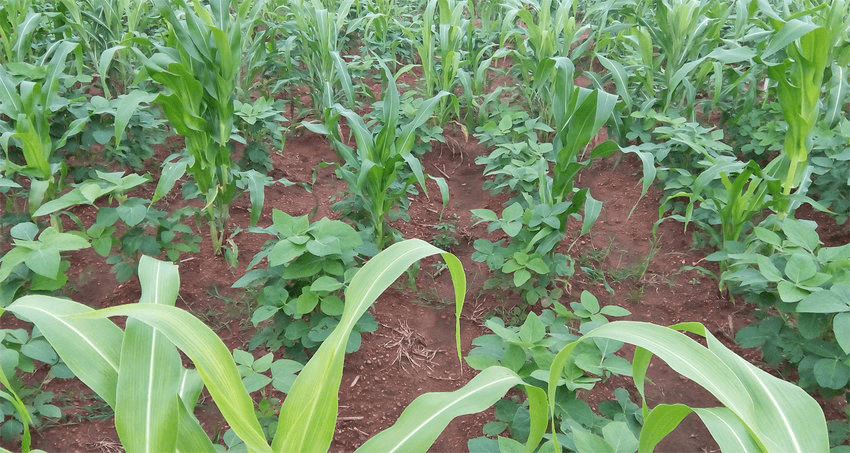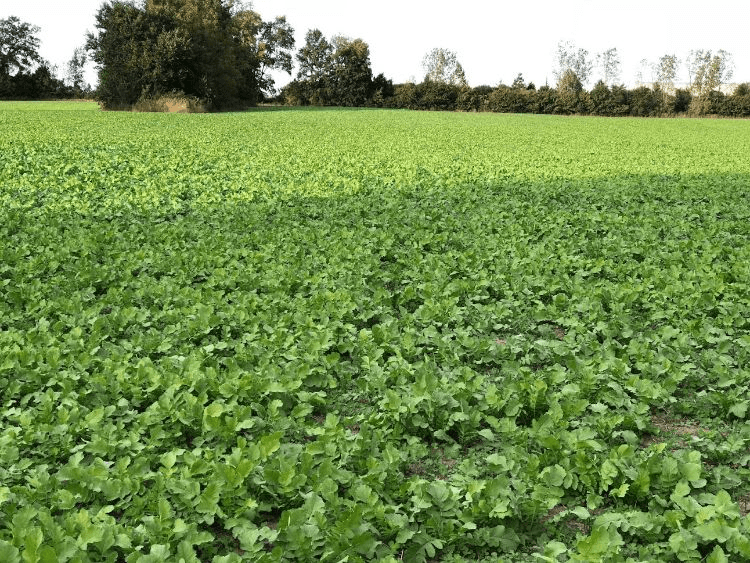Cropping Systems in Organic Crop Production
In organic crop production, the choice of cropping systems is crucial in ensuring sustainable agricultural practices and the preservation of soil health and fertility. A cropping system refers to the management of crops and their sequences over time on a particular piece of land.
The design of these systems is paramount in maximizing yields while minimizing negative environmental impacts.
Cropping Systems in Organic Crop Production
1. Intercropping in Organic Systems

Intercropping is the growing of two or more crops concurrently on the field. The practice enhances maximum utilization of above and below growing resources. Additionally, it gives security against total crop failure in incidences of pest or disease attack.
In organic systems which do not involve the usage of pesticides, the practice helps break pest and disease cycles as well as serve as a weed control measure. Crop rotation is the growing of crops in sequence or an alternating manner while mono-cropping.
Intercropping in Organic Systems; Intercropping is growing more than one crop simultaneously in the same field during a growing season. In organic systems, the practice gives significant pest suppression effects enabling cultivation without using pesticides.
Intercropping in organic systems provides effective suppression of weeds and diseases and thereby improves grain yield and quality. The practice of intercropping brings diversity into the agro-ecosystem. This diversity is considered a key to their resilience and stability.
In organic systems of intercropping, legumes are mostly included in the intercrop because of their nitrogen fixing ability thus boosting the fertility of the soil since chemical fertilizers are not used. Manures (green, compost, farmyard, etc.) are also used to improve or boost the nutrient status of the soil.
Intercropping is the cultivation of two or more crops simultaneously on the same piece of land. This technique optimizes space utilization, enhances resource efficiency, and promotes biodiversity.
In an organic context, carefully selected crop combinations can deter pests and diseases naturally, thus reducing the need for synthetic pesticides.
Additionally, certain intercrops can mutually benefit each other through complementary nutrient uptake, efficient resource use, and pest control, ultimately leading to improved overall crop yield and soil health.
Read Also: Soil Test Correlation and Calibration
2. Crop Rotation in Organic Systems

Crop rotation is a valuable management tool for organic farmers which involve the cultivation of different crops in temporal succession on the same land basically to preserve the productive capacity of the soil. The succeeding crop will be different specie than the previous crops.
In organic systems, given the absence of chemical usage, the use of crop rotation help break host cycles for pest and diseases. Alternation of crops with different seasonal patterns and growth habits can also help to suppress weeds.
Properly managed rotations can also increase micro biological diversity and activity; raise organic matter content, conserve soil and enhance soil structure.
Rotations in organic systems usually include a rest (fallow) period for individual fields where grass or a green manure crop e.g. Clover is planted for a season or more before being grazed or ploughed into the soil to add fertility.
A fundamental practice in organic farming, crop rotation involves the systematic sequencing of different crops in the same area. This method helps break disease cycles, improves soil fertility, and reduces pest pressure.
By alternating crops with different nutrient requirements, farmers can effectively manage soil nutrients, suppress weeds, and prevent the buildup of pathogens and pests.
A well-planned crop rotation strategy is pivotal for maintaining soil quality and promoting sustainable crop production.
Read Also: Steps in Conducting Soil Test Calibration and Fertilizer Recommendation
3. Mono-Cropping in Organic Systems

Mono-cropping is the practice of planting one crop in the same place year in year out. Planting the same crop in the same place each year zaps nutrients from the earth and leaves soil weak and unable to support healthy plant growth.
The practice also creates spread of pest and diseases and in organic systems, chemicals usage is not allowed to remedy the pest or diseases. The measures adopted under organic mono-culture systems include:
1. Introduce diversity, this can be achieved by introducing a mixture of genotypes of the same crop species with different nutrient levels. E.g. the parts consumers eat such as corn ears or broccoli heads could be identical but the parts the insects eat e.g. leaves could vary. This also can be done to reduce disease spread among crops.
2. Gene silencing, this is achieved by the use of bio-stimulants derived from naturally occurring soil bacteria e.g. nematodes. The gene silencing process is triggered when the bio-stimulants, which are metabolites of bacteria occurring naturally in the soil to a crop e.g wheat.
The bio-stimulants can be applied either by soaking the seeds or roots of the plant in a solution containing the bio-stimulants or by applying the solution to the soil in which the plants are growing.
3. Natural control measures such as crop rotation biological control measures can be adopted.
4. The fertility of soils under monoculture in organic systems can be boosted and maintained through the application of manures e.g. compost, farm yard manure, green manure etc.
Manipulating cultural practices such as early planting to avoid certain diseases or pest. e.g. planting susceptible crops at times of the year when certain pest or diseases are less pervasive
Organic farming seeks to ensure production of healthy food, soils, plants and keeping the environment a priority.
The cropping systems of the farmers some of which include; intercropping, crop rotation and mono-cropping are ensured to be carried out according to the principles guiding organic agriculture one of which is to grow chemical free crops.
Intercropping is growing more than one crop simultaneously in the same field during a growing season. In organic systems, the practice gives significant pest, weed, and disease suppression effects enabling cultivation without using chemicals.
Crop rotation is another cultivation practice carried out by organic farmers as it is valuable management tool for organic farming which involve the cultivation of different crops in temporal succession on the same land basically to preserve the productive capacity of the soil, break pest and disease cycles.
Mono-cropping is the practice of planting one crop in the same place year in year out. The practice tends to mine the soil and creates spread of pest and diseases.
However organic control measures such as introducing diversity, gene silencing by using bio-stimulants, crop rotation and manipulating cultural practices can help address the problem of pest and diseases in mono-cropping systems. Soil fertility can be improved in this system through manure application.
Read Also: The Power of Energy Conservation
4. Cover Cropping

Integrating cover crops into the cropping system is a key strategy for organic farmers. Cover crops are grown primarily to protect and improve the soil between main crop seasons.
They help prevent soil erosion, suppress weeds, enhance soil structure, and increase organic matter content. Leguminous cover crops, for instance, can fix atmospheric nitrogen, thus reducing the need for external nitrogen inputs.
These cover crops also play a significant role in supporting beneficial soil microorganisms, thereby contributing to long-term soil fertility and sustainability.
5. Agroforestry Systems

Incorporating trees and shrubs into farming systems is gaining traction in the realm of organic crop production. Agroforestry systems not only diversify farm products but also contribute to enhanced soil fertility, improved water retention, and the promotion of beneficial ecological interactions.
Trees can serve as windbreaks, preventing soil erosion, while also providing habitat for beneficial organisms. Moreover, the produce from trees and shrubs can provide an additional source of income for farmers, fostering economic resilience within the agricultural landscape.
6. Conservation Tillage and No-Till Farming

Organic cropping systems often emphasize reduced soil disturbance through conservation tillage or no-till farming practices. These methods minimize soil erosion, preserve soil structure, and promote the accumulation of organic matter.
By reducing soil disturbance, beneficial soil organisms remain undisturbed, contributing to improved soil health and biodiversity.
This approach also aids in the conservation of water and energy, while mitigating greenhouse gas emissions associated with conventional tillage practices.
In summary, the careful selection and implementation of cropping systems in organic crop production are pivotal for maintaining ecological balance, promoting soil health, and ensuring long-term agricultural sustainability.
By integrating diverse and complementary cropping techniques, organic farmers can cultivate resilient and productive agricultural landscapes while fostering environmental stewardship and sustainable food production.
Read Also: The Wonderful Benefits of Waste Recycling









